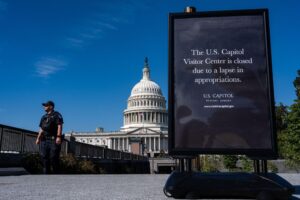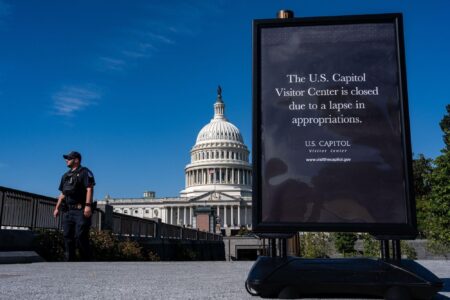Demystifying the U.S. Department of Education: Its Influence, Boundaries, and Impact on American Schools
The Federal Education Agency: Clarifying Its Mission and Reach
The U.S. Department of Education is a central yet frequently misunderstood player in the American education system. Unlike common assumptions, it does not operate public schools or directly determine curricula. Instead, its core mission centers on disbursing federal funds, enforcing educational civil rights laws, and gathering data to guide national education policies. Acting as a liaison between federal objectives and state or local education bodies, the Department ensures that federal protectionsŌĆösuch as those against discriminationŌĆöare upheld and that financial resources are directed to schools that need them most.
Its major duties include managing federal student loan programs and conducting research on educational trends and outcomes. However, the DepartmentŌĆÖs authority stops short of managing daily school operations or prescribing teaching methods, as these responsibilities predominantly rest with state and local governments. This decentralized structure balances local control with federal oversight. Below is an outline of the DepartmentŌĆÖs primary areas of influence:
- Legal enforcement: Upholding laws like the Individuals with Disabilities Education Act (IDEA) and Title IX.
- Funding distribution: Allocating billions annually to support K-12 and postsecondary education.
- Research and data collection: Publishing comprehensive national education statistics to inform policymakers and the public.
- Student loan oversight: Managing federal loan programs, repayment options, and forgiveness initiatives.
| Function | Coverage | Illustration |
|---|---|---|
| Policy Enforcement | Nationwide | Ensuring civil rights compliance in schools |
| Funding Allocation | Federal level | Distributing Title I grants to disadvantaged schools |
| Data & Research | National | Annual education performance reports |
| Student Loan Management | Federal borrowers | Administering loan forgiveness programs |
Core Duties and Boundaries: What the Department Can and Cannot Do
The Department of EducationŌĆÖs influence is substantial but circumscribed. It primarily shapes education through grant funding, policy enforcement, and data-driven guidance. It awards billions in grants to states and schools, supports initiatives aimed at closing achievement gaps, and monitors compliance with federal laws designed to protect studentsŌĆÖ rights. Yet, it does not dictate curriculum content, select textbooks, or manage the daily functions of schoolsŌĆöthese remain under state and local jurisdiction.
To better understand its scope, consider the following distinctions:
- Funding and grants: Provides financial support targeting special education, low-income students, and other priority areas.
- Compliance oversight: Ensures schools adhere to federal civil rights laws, including non-discrimination and equal access.
- Data collection: Compiles and disseminates national education statistics to inform policy and public discourse.
- Does not: Control curriculum choices, standardized testing, or teacher employment decisions.
- Does not: Operate public schools or manage local education agencies.
| Department Role | Level of Authority |
|---|---|
| Federal Funding Allocation | High |
| Curriculum Control | None |
| Enforcement of Civil Rights | Moderate |
| Local School Management | None |
Supporting Schools, Students, and Educators: The DepartmentŌĆÖs Nationwide Impact
Beyond funding and enforcement, the Department of Education plays a vital role in promoting equitable access to quality education across the country. It channels resources through programs like Title I, which supports schools in economically disadvantaged areas, and IDEA grants that fund special education services. The Department also provides technical assistance, sets accountability standards, and monitors adherence to federal laws to foster consistent and fair educational environments.
Supporting educators is another critical focus. The Department invests in professional development programs, encourages initiatives to enhance teacher effectiveness, and funds research on innovative instructional strategies. Key areas of support include:
- Grant initiatives: Financing projects that implement evidence-based teaching methods and innovative educational models.
- Data-driven insights: Collecting and sharing data to help schools improve and policymakers make informed decisions.
- Community partnerships: Facilitating collaboration among schools, families, and local organizations to strengthen educational outcomes.
| Support Category | Main Activities | Resulting Benefits |
|---|---|---|
| Funding | Distributing federal grants | Promotes resource equity in underserved schools |
| Accountability | Monitoring compliance with federal laws | Protects student rights and maintains standards |
| Professional Development | Supporting teacher training programs | Enhances instructional quality and student outcomes |
Practical Advice for Leveraging Federal Education Programs
Effectively utilizing federal education resources requires a clear understanding of program offerings and their limitations. Experts recommend focusing on initiatives with strong legal foundations and measurable impacts, such as Title I funding for disadvantaged students or grants supporting special education services. Since state education agencies serve as intermediaries between the federal Department and local districts, collaboration with these agencies is essential for accessing and maximizing available resources.
Key strategies include:
- Regularly consulting the official ED.gov website for updated program guidelines and eligibility criteria.
- Building strong partnerships with state education officials to receive tailored support and guidance.
- Participating in federal grant-writing workshops to improve application success rates.
- Monitoring federal budget announcements to anticipate changes in funding availability.
Experts also suggest using a structured framework to evaluate federal education supports, helping educators and administrators prioritize resources and identify areas where federal assistance may be limited. The table below highlights common focus areas, federal strengths, and typical challenges faced at the local level:
| Focus Area | Federal Strength | Local Challenges |
|---|---|---|
| Title I Funding | Targeted financial support for low-income students | Ensuring equitable distribution across districts |
| Special Education | Mandated access and dedicated resources | Staff training gaps and implementation delays |
| Higher Education Grants | Support for minority-serving institutions and research | Limited awareness and application hurdles |
| Accountability Measures | Clear federal reporting requirements | Administrative workload on schools |
Summary: Grasping the DepartmentŌĆÖs Influence and Constraints
In conclusion, a clear understanding of the U.S. Department of EducationŌĆÖs scope is vital for comprehending how federal policies shape American education. While the Department wields significant power in funding allocation, legal enforcement, and data collection, many critical decisionsŌĆösuch as curriculum design and school managementŌĆöremain under state and local control. As education policy debates continue to evolve, recognizing the DepartmentŌĆÖs defined roles helps clarify which reforms are achievable at the federal level and which depend on local initiatives.







